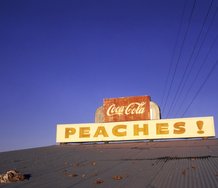Martin Patrick – 20 October, 2010
It is fascinating to consider a sculpture created by the annexing of a tool of drawing against itself so to speak the pencil leads becoming the primary structural components of Trevelyan's complex visual web. And as I am lured closer to the sculpture in question, I start noticing the minor inequalities, idiosyncrasies, mismeasurements if you will that relieve the pressure of scrutinizing the work's apparent seamlessness.
Wellington
Peter Trevelyan
The Light Fantastic
25 September - 21 November 2010
Almost liable to be overlooked, situated as it is alongside the cacophonous aesthetic barrage of the Roundabout exhibition, is the slow burning yet altogether entrancing ember of artist Peter Trevelyan’s The Light Fantastic. Although one might discern straightaway that Trevelyan prioritizes subtlety over spectacle, there is a formidable presence to his installation, a fractured ghost of a geodesic dome, composed painstakingly by the artist from the thinnest of pencil leads.
The exhibition creates an interesting conversation both around and between media, as Trevelyan’s sculptural construction refers in manifold ways to drawing and architecture, and his photograms displayed nearby, created with the use of similarly geometric forms, flatten out the spatially ambitious aspects of the work into an alluring two-dimensional dissection. Recalling the remark of American Modernist David Smith, that his own sculptures were “drawings in space,” Trevelyan shows great skill in visually prompting the viewer to move back and forth from a kind of linear rendering to an increasing recognition of the surrounding spatial context within which the lines/leads function as coordinates.
In addition, it is fascinating to consider a sculpture created by the annexing of a tool of drawing against itself so to speak the pencil leads becoming the primary structural components of Trevelyan’s complex visual web. And as I am lured closer to the sculpture in question, I start noticing the minor inequalities, idiosyncrasies, mismeasurements if you will that relieve the pressure of scrutinizing the work’s apparent seamlessness. It is the interruptions and distinct differences shading and warping its fine triangular compartments that give the work (and the spectator) room to breathe.
Regarding Trevelyan’s photograms, I am taken both by their stark monochromatic beauty, and moreover thinking of other related antecedents to these particular images, such as the photograms by the Constructivist Moholy Nagy which also referred again and again to three-dimensional space, and the very earliest photograms by one of the founders of the photographic medium itself, Henry Fox Talbot and his collation of his experiments under the evocative heading: The Pencil of Nature.
The sci-fi undercurrents of Trevelyan’s work have been noted before, and I would also insert such inevitable touchstones as the visionary inventor Buckminster Fuller (whose work is ably outlined in the perceptive gallery text by curator Abby Cunnane), and such historic art practices stemming from architectural roots as those of Ant Farm, Archigram, and Gordon Matta-Clark, as well as the utterly prosaic but cheerfully utopian suburban “dome homes” of the 1970s. Trevelyan’s title The Light Fantastic summons an image of its careful creator almost defying gravity at times, in order to conjure a work impressive in its wispy fragility, as if there and not there, a transparent feat of architectonic prestidigitation. Perhaps this is where the “fantastical” bit really kicks in.
Trevelyan’s work has been well served by its placement in the alcove-like enclosure of the Hirschfeld Gallery space, almost as if one could stumble across it without it being immediately evident. Unfortunately I would imagine that the gallery is more troubled about the ability of visitors to literally stumble into the work, and potentially cause damage, so that now the perimeter of Trevelyan’s construction is awkwardly framed by a taped off square on the floor of the space. If one can manage to overlook this aspect of the installation, it remains highly elegant and engaging.
I would also simply note that just as I zeroed in to inspect Trevelyan’s work, strains of The Byrds (Eight miles high ‘and when you touch down/You’ll find that it’s stranger than known’) then Captain Beefheart (‘I have to run so far to find a clear spot/Sun’s all hottin’ and a rottin’ hot’) wafted in from Roger Shepherd’s digital “mix tape” just outside the space, providing a serendipitously apt soundtrack of late-Modern pop, leaving my foot tapping perilously close to the dome.
Martin Patrick




 Two Rooms presents a program of residencies and projects
Two Rooms presents a program of residencies and projects Advertising in this column
Advertising in this column



This Discussion has 0 comments.
Comment
Participate
Register to Participate.
Sign in
Sign in to an existing account.